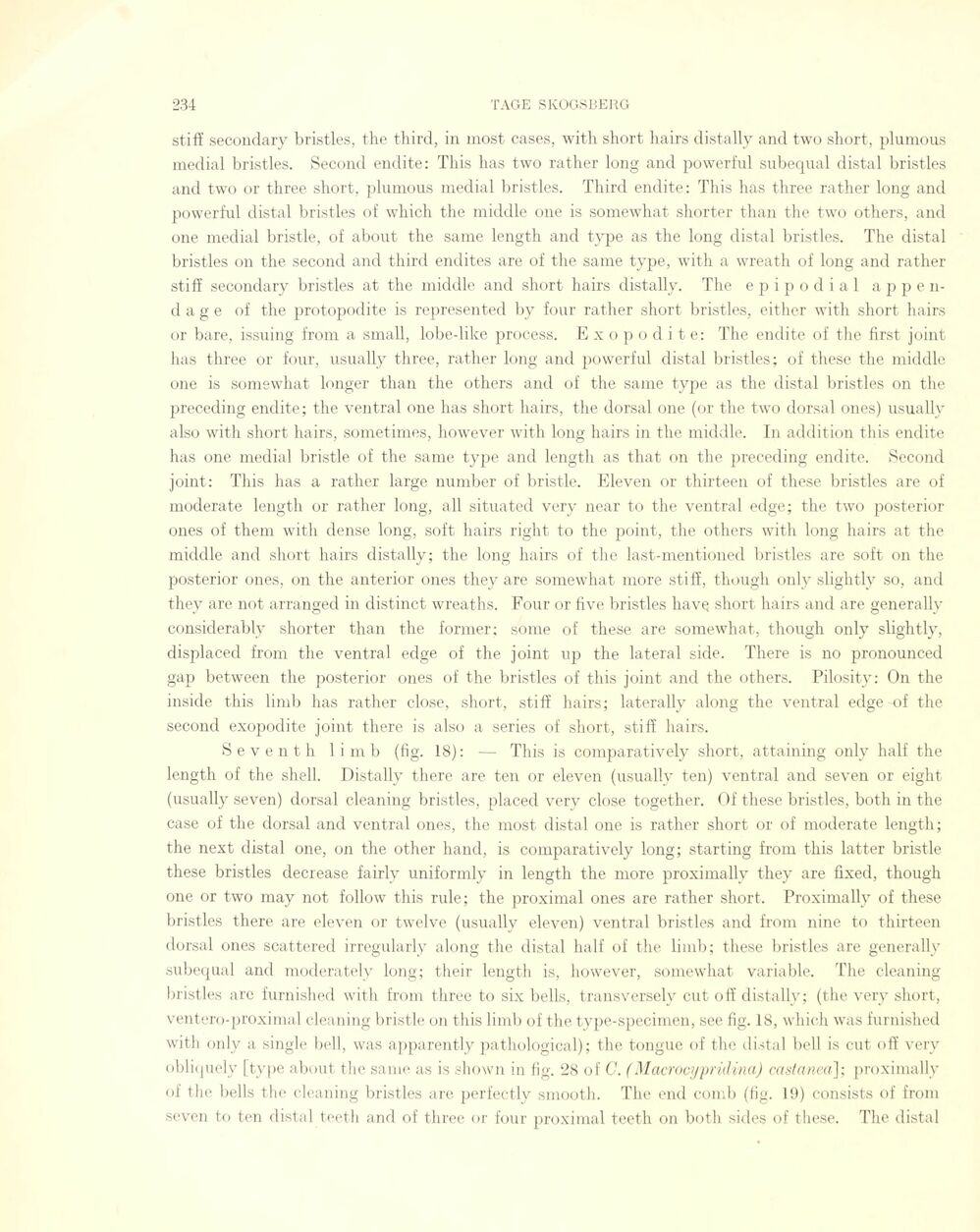
Full resolution (JPEG) - On this page / på denna sida - Sidor ...

<< prev. page << föreg. sida << >> nästa sida >> next page >>
Below is the raw OCR text
from the above scanned image.
Do you see an error? Proofread the page now!
Här nedan syns maskintolkade texten från faksimilbilden ovan.
Ser du något fel? Korrekturläs sidan nu!
This page has never been proofread. / Denna sida har aldrig korrekturlästs.
stift’ secondary bristles, the third, in most cases, with short hairs distally and two short, plumous
medial bristles. Second endite: This has two rather long and powerful subequal distal bristles
and two or three short, plumons medial bristles. Third endite: This has three rather long and
powerful distal bristles of wliich the middle one is somewhat shorter than the two others, and
one medial bristle, of about the same length and type as the long distal bristles. The distal
bristles on the second and third endites are of the same type, with a wreath of long and rather
stift secondary bristles at the middle and short hairs distally. The epipodial
appen-d a g e of the protopodite is represented by four rather short bristles, either with short hairs
or bare, issuing from a small, lobe-like process. Exopodite: The endite of the first joint
has three or four, usually three, rather long and powerful distal bristles; of these the middle
one is somewhat longer than the others and of the same type as the distal bristles on the
preceding endite; the ventral one has short hairs, the dorsal one (or the two dorsal ones) usually
also with short hairs, sometimes, however with long hairs in the middle. In addition this endite
has one medial bristle of the same type and length as that on the preceding endite. Second
joint: This has a rather large number of bristle. Eleven or thirteen of these bristles are of
moderate length or rather long, all situated very near to the ventral edge; the two posterior
ones of them with dense long, soft hairs right to the point, the others with long hairs at the
middle and short hairs distally; the long hairs of the last-mentioned bristles are soft on the
posterior ones, on the anterior ones they are somewhat more stift, thougli only slightly so, and
they are not arranged in distinct wreaths. Four or five bristles havç short hairs and are generally
considerably shorter than the former; some of these are somewhat, though only slightly,
displaced from the ventral edge of the joint up the lateral side. There is no pronounced
gap between the posterior ones of the bristles of this joint and the others. Pilosity: On the
inside this limb has rather close, short, stift hairs; laterally along the ventral edge-of the
second exopodite joint there is also a series of short, stift hairs.
Seventh limb (fig. 18): — This is comparatively short, attaining only half the
length of the shell. Distally there are ten or eleven (usually ten) ventral and seven or eight
(usually seven) dorsal cleaning bristles, placed very close together. Of these bristles, both in the
case of the dorsal and ventral ones, the most distal one is rather short or of moderate length;
the next distal one, on the other hand, is comparatively long; starting from this latter bristle
these bristles decrease fairly uniformly in length the more proximally they are fixed, though
one or two may not follow this rule; the proximal ones are rather short. Proximally of these
bristles there are eleven or twelve (usually eleven) ventral bristles and from nine to thirteen
dorsal ones scattered irregularly along the distal half of the limb; these bristles are generally
subequal and moderately long; their length is, however, somewhat variable. The cleaning
bristles are furnished with from three to six bells, transversely cut oft distally; (the very short,
ventero-proximal cleaning bristle on this limb of the type-specimen, see fig. 18, whieh was furnished
with only a single bell, was apparently pathologica!); the tongue of the distal bell is cut off very
obliquely [type about the same as is shown in fig. 28 of C. (Macrocypridina) castanea]; proximally
of the bells the cleaning bristles are perfectly smooth. The end comb (hg. 19) consists of from
seven to ten distal teeth and of three or four proximal teeth on both sides of these. The distal
<< prev. page << föreg. sida << >> nästa sida >> next page >>